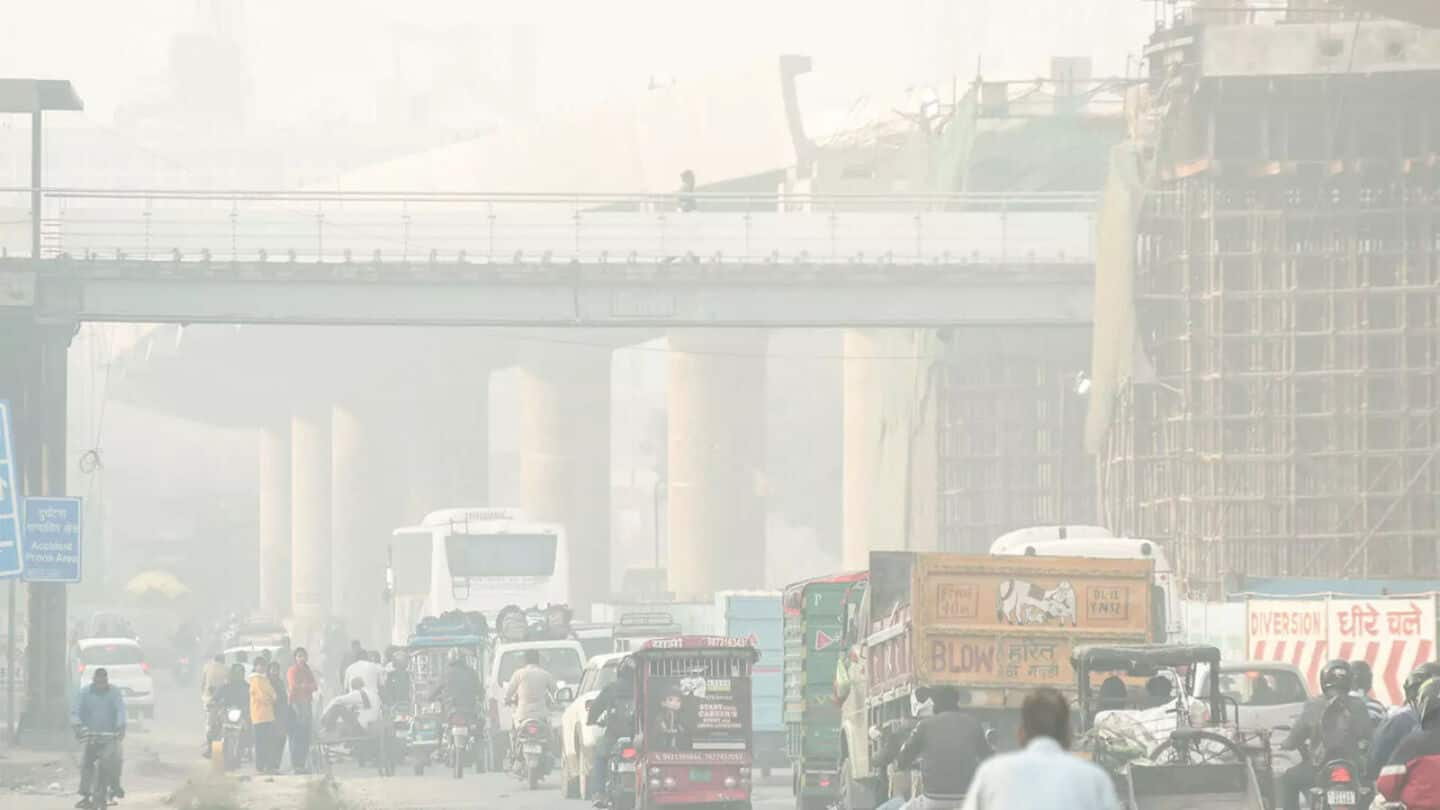
Delhi air turns toxic as AQI nears 500; GRAP-4 implemented
What's the story
The air quality in Delhi and its neighboring cities hit alarming levels on Tuesday, with the Air Quality Index (AQI) crossing 400 in some areas. At 7:00am, Gurugram recorded an AQI of 411, while Faridabad and Meerut recorded 443, indicating extremely polluted conditions. Ghaziabad, Greater Noida, and Noida recorded extremely high AQI scores of 554, 558, and 469, respectively.
Readings
Observations range from 'very poor' to 'severe'
The Early Warning System (EWS) for Delhi's air quality forecasts are in the "very poor" and "severe" categories, based on the Indian Air Quality Index (AQI) scale. Meanwhile, The Indian Express reported that the AQI for all of Delhi at 7am on Tuesday read 446 on aqi.in. The reading by EWS at the same time was 341. According to EWS, Bawana recorded the worst AQI at 419, followed by Jahangirpuri at 414.
Twitter Post
Visuals from Gazipur on Tuesday morning
#WATCH | Delhi: Visuals from the Ghazipur area this morning as a layer of toxic smog blankets the city. AQI (Air Quality Index) around the area is 345, categorised as 'Very Poor', as claimed by CPCB (Central Pollution Control Board). pic.twitter.com/H6u3wZdYL1
— ANI (@ANI) November 18, 2025
Emergency protocols
GRAP Stage 4: Stringent measures to combat pollution
In light of this serious situation, authorities have invoked Stage 4 of the Graded Response Action Plan (GRAP), the highest level of emergency pollution-control measures The measures include a ban on truck entry into Delhi, barring those carrying essential goods or using cleaner fuels like CNG, LNG, BS-VI diesel, or electricity. Construction activities at public and government project sites have been suspended, and non-essential commercial vehicles from outside Delhi are also banned unless they use CNG or BS-VI diesel.
Health precautions
Work-from-home directive and other GRAP Stage 4 measures
The GRAP Stage 4 also mandates or allows up to 50% work-from-home for employees in government and private offices. This is aimed at reducing outdoor exposure to hazardous air. All restrictions under GRAP Stages 1, 2, and 3 are still applicable as authorities continue to battle one of their worst pollution phases in months.
Previous restrictions
GRAP Stage 1-3: Earlier measures to curb pollution
Before reaching Stage 4, GRAP had three other stages with increasing levels of restrictions. Stage 1 focused on curbing emissions from daily activities, such as banning coal use in small eateries and open burning of waste. Stage 2 introduced stricter rules, like banning diesel generator sets (except for essential services) and increasing parking charges to discourage private vehicle usage.
Construction ban
GRAP Stage 3: Non-essential construction halted
Stage 3 measures include halting non-essential construction activities such as excavation and demolition. It also bans BS-III and BS-IV diesel vehicles in Delhi-NCR, and tightens monitoring of stone crushers and heavy diesel-powered machinery. Schools up to Class 5 may be closed to protect young children from hazardous air. Violating these norms could lead to penalties or legal action against violators.